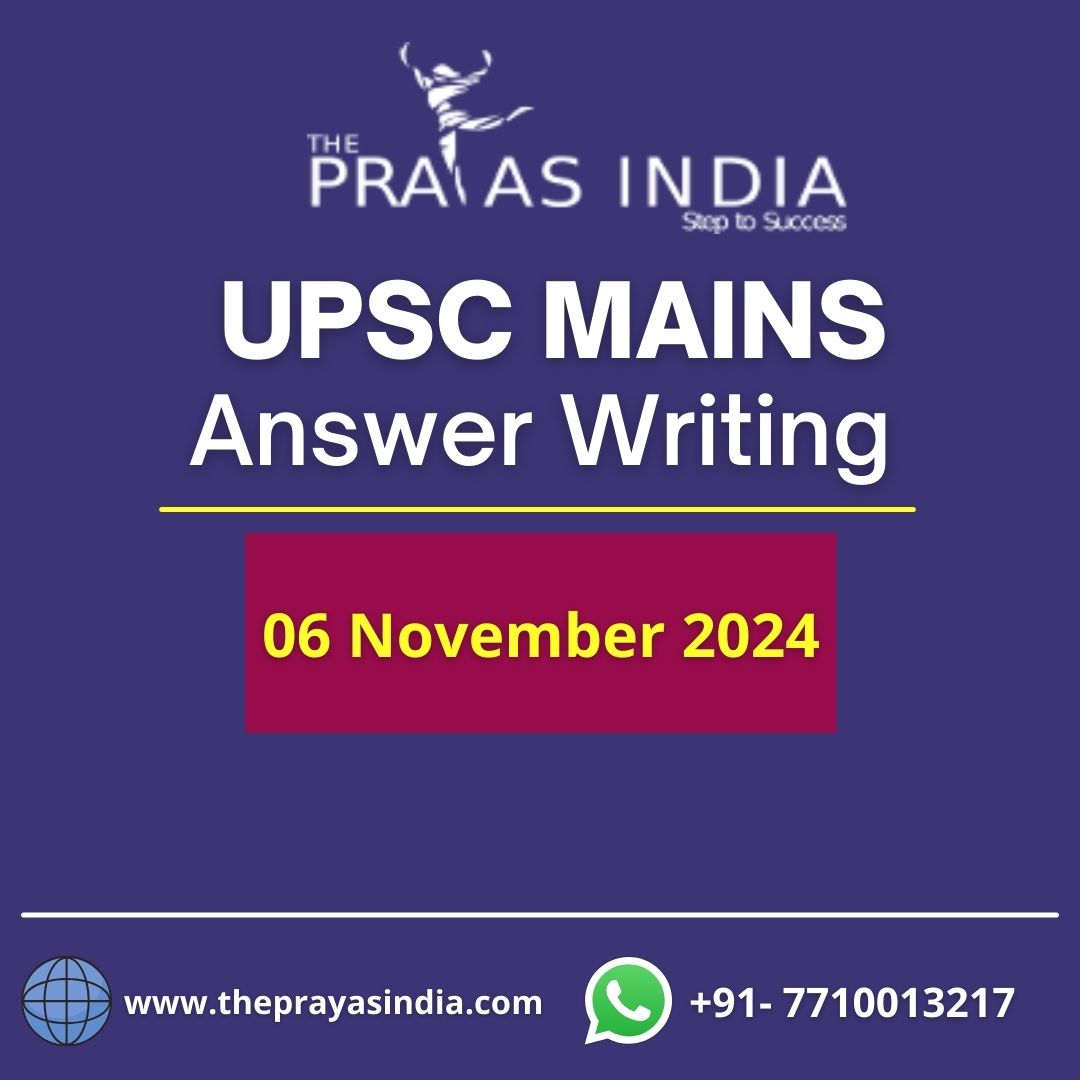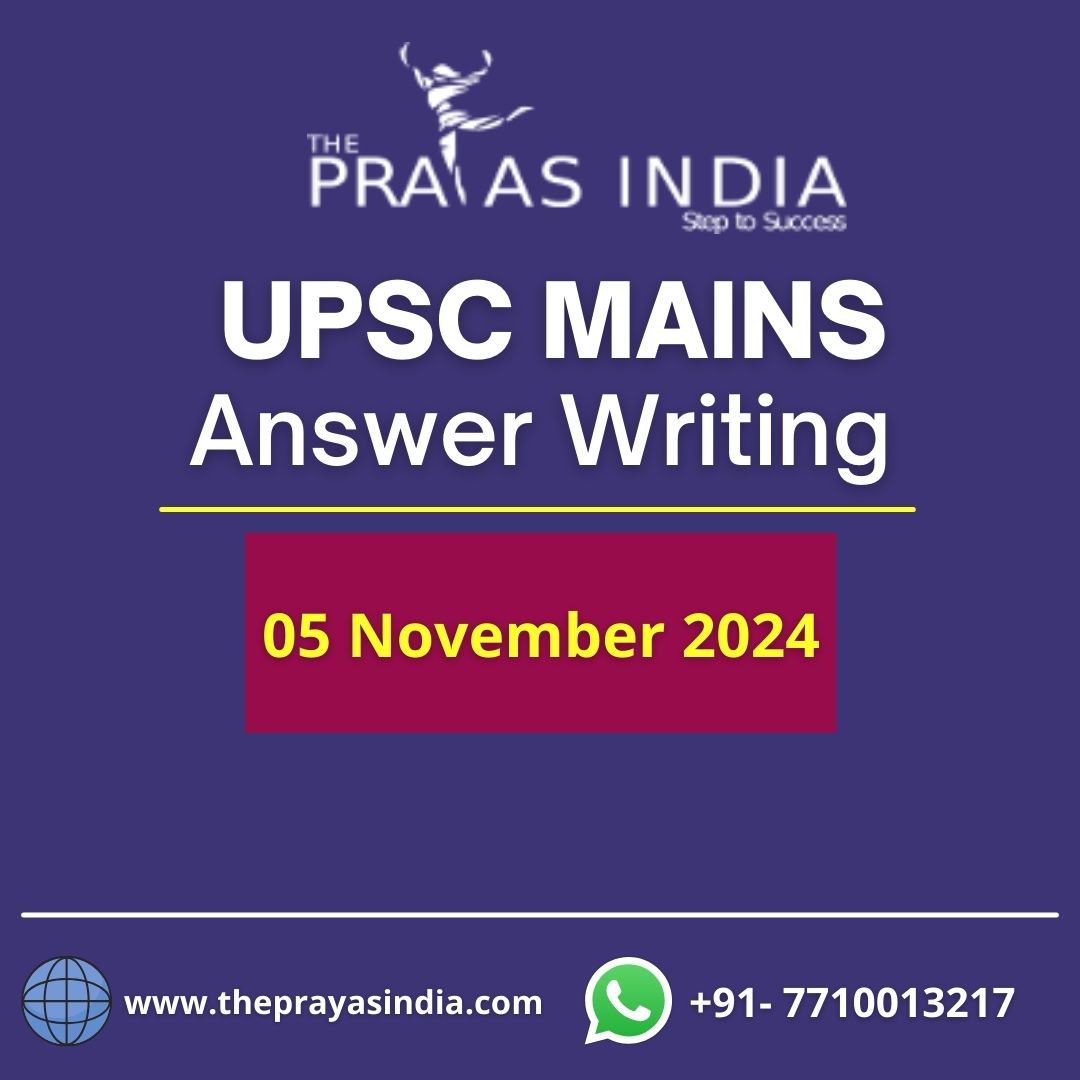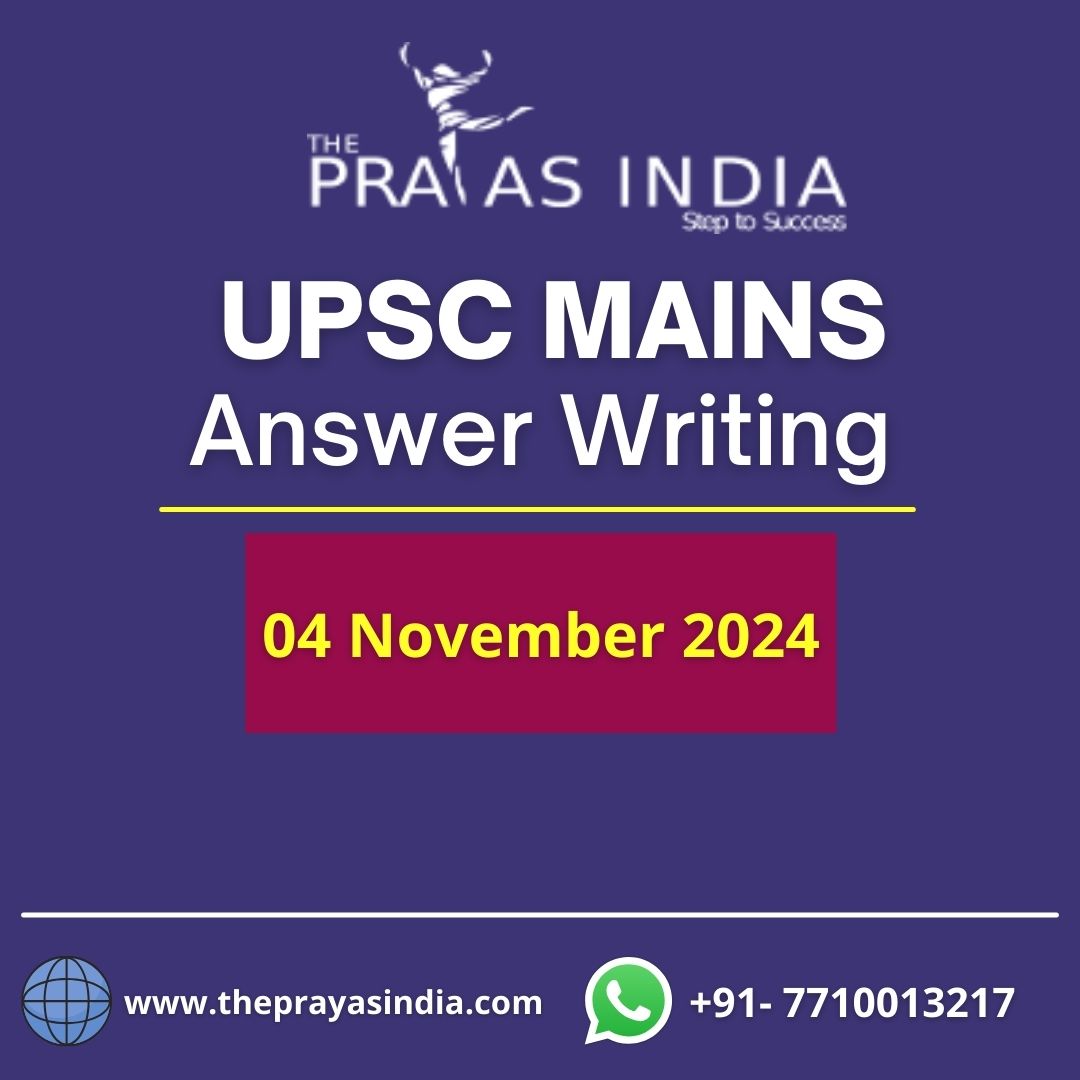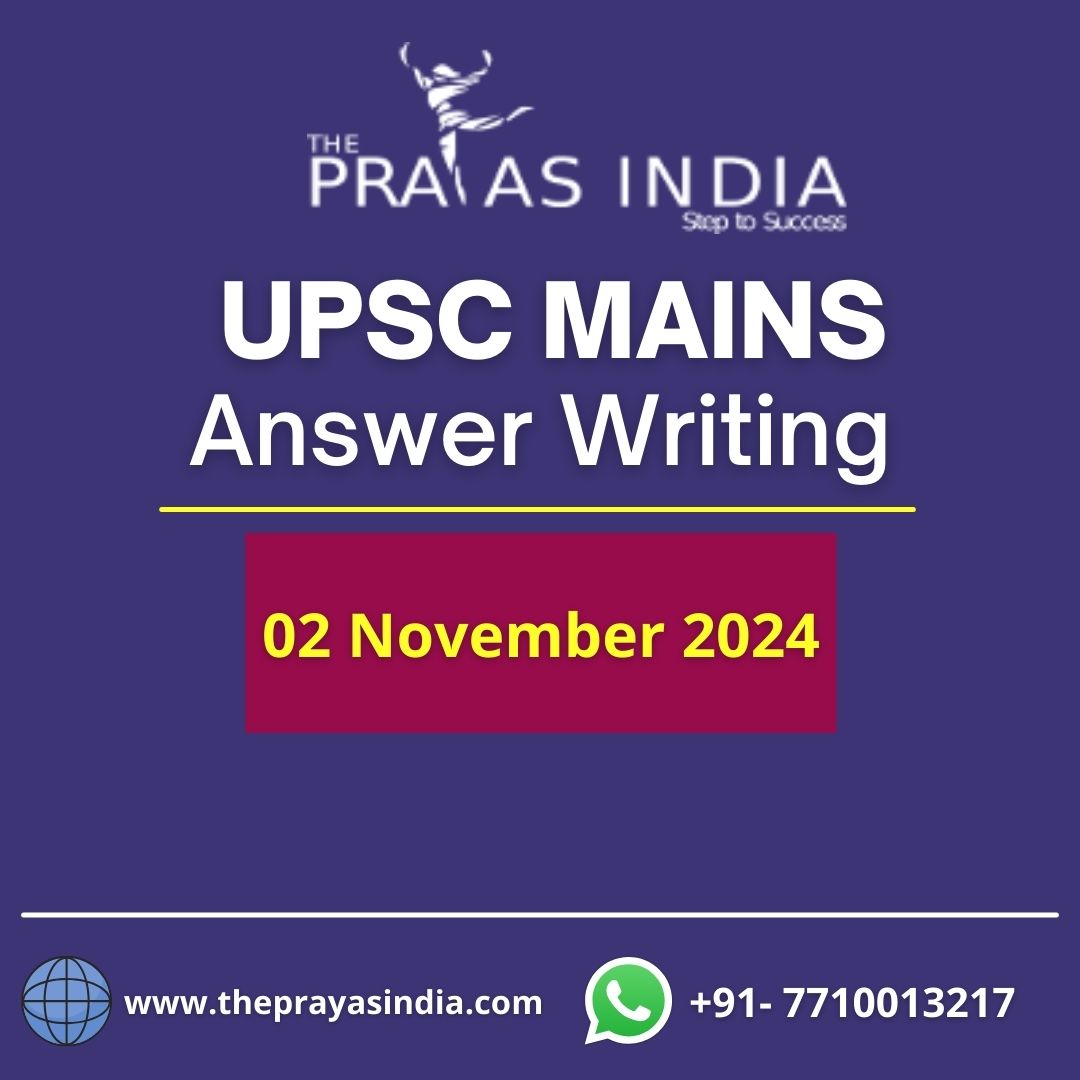MAINS DAILY QUESTIONS & MODEL ANSWERS
Q1. What are the roles and authority of the UN Security Council? Evaluate the need for reforming the UNSC as well.
GS II – International Issues
Introduction:
- Within the six principal organs of the UN system is the Security Council. There are fifteen members of the council: ten non-permanent members chosen for two-year periods and five permanent members. The United States, Russia, France, China, and the United Kingdom are the five permanent members.
The UN Security Council’s duties and authorities:
- To preserve world peace and security in line with the goals and ideals of the United Nations.
- to look into any conflict or circumstance that could cause friction between nations.
- to suggest strategies for resolving these conflicts or the conditions of settlement.
- to create strategies for the implementation of a weapons control system.
- to assess whether an act of violence or a threat to the peace exists and to suggest a course of action.
- To urge Members to impose economic penalties and other non-military actions in order to deter or halt aggression.
- to employ force to stop an aggressor.
- to suggest adding new members to the membership.
- to carry out the United Nations’ trusteeship duties in “strategic areas”.
- to suggest to the General Assembly that the Secretary-General be appointed, and to vote for the International Court of Justice’s judges alongside the Assembly.
Why is reforming the Security Council necessary?
- Composition: The geopolitical climate of 1945 is reflected in the Security Council’s present makeup. Since 1945, 142 more nations have joined the UN, making the current makeup of the Council no longer reflect the world. Because they currently do not have the representation on the Council that their standing demands, Africa, Asia, Latin America, and the Caribbean in particular are demanding for the composition of the Council to be adjusted to reflect the new realities.
- Broad authority: The main body in the international community for managing conflicts and preserving peace is the United Nations Security Council. Its decisions are binding on all member states, unlike those made by the General Assembly. This implies that it possesses extensive authority and can, when required, implement measures that violate state sovereignty, such as imposing penalties.
- Acknowledging the role of non-member states: The United Nations Charter explicitly stipulates that nations that contribute significantly to the organisation should have seats in the Security Council in addition to calling for a geographically fair allocation of seats. Germany, Japan, and India are therefore thought to be potential contenders for the new permanent seats.
- Obstacles in the way: Two-thirds of UN members, including all five of the P5, would need to approve any changes to the council’s makeup or voting procedures, and any changes would need to be supported by appropriate national law. The chances for revising the council seem dubious given the rising political polarisation in many nations and the intensifying geopolitical rivalry.
- Veto Power: Another major issue is the P5 members’ ability to veto decisions. It is essentially debilitating for the P5 to be able to block any policy because their interests are virtually always at odds. For example, Russia has suppressed any criticism of its incursion into Ukraine. China has also blocked measures that would have harmed its interests by using its veto power.
Way Forward:
- Making the council more powerful, efficient, and capable of serving all of the world’s member states and citizens is the main goal of reform. The Security Council should appoint a slate of new permanent members that is geographically diversified and the P5 nations should abstain from abusing their veto power in order to preserve the legitimacy of the organisation.
Q2. The Ozone Hole in Antarctica is getting bigger than ever. Describe the elements that led to the Ozone hole’s creation. Discuss how the ozone layer’s deterioration has been stopped by the Montreal Protocol.
GS III – Environmental Conservation related issues
Introduction:
- The loss of the protective ozone layer over Earth’s polar regions in the upper atmosphere, or stratosphere, is referred to as a “ozone hole.” An enormous hole in the ozone layer has been found by satellite measurements above Antarctica. Approximately three times the size of Brazil, the hole measured 26 million square kilometres and is referred to by experts as a “ozone-depleted area.”
Factors that cause the ozone hole to form:
- Distribution of halogen gases: In both hemispheres, the stratosphere contains similar amounts of the halogen source gases that are released from the Earth’s surface. The ozone layer in the stratosphere is chemically destroyed by reactive gases that contain the halogens chlorine and bromine.
- Low polar temperatures: Low temperatures must exist throughout a wide range of stratospheric altitudes, over sizable geographic regions, and for prolonged periods of time in order to cause the severe ozone degradation symbolised by the ozone hole. Because they facilitate the formation of liquid and solid polar stratospheric clouds (PSCs), low temperatures are significant. PSCs can form anywhere in the Antarctic for almost the whole winter (about five months) and in the Arctic for only a few days (10–60 days) in most seasons due to the low enough winter temperatures.
- Conditions of isolation: During the winter, the stratosphere air in the polar regions is comparatively cut off from other stratospheric regions for extended periods of time. Strong winds that encircle the poles and create a polar vortex, which stops significant air movement into or out of the polar stratosphere, are the source of the isolation. Because of this circulation’s strengthening in the winter when stratospheric temperatures drop, the Antarctic’s vortex isolation is far more successful than the Arctic’s.
- Polar stratospheric clouds (PSCs): At high latitudes, PSCs are crucial to the stratospheric ozone depletion that occurs in the winter and spring. PSC particles serve as locations for heterogeneous reactions that catalytically degrade ozone by converting stable compounds found in chlorine reservoirs into radicals.
- Volcanic eruptions: Experts surmise that the significant ozone hole observed this year may have resulted from the December 2022 and January 2023 volcanic eruptions at Hunga Tonga in Tonga. Normally, gas emitted during a volcanic eruption stays below the stratosphere, however a significant amount of water vapour was released during this eruption and entered the stratosphere. Through chemical interactions, the water altered the rate of heating of the ozone layer. Other substances like bromine and iodine that can destroy ozone are also present in the water vapour.
The Montreal Protocol’s role in preventing ozone layer degradation:
- The production, use, and emissions of ozone-depleting substances (ODSs) have been successfully decreased worldwide thanks to the historic 1987 Montreal Protocol on Substances that Deplete the Ozone Layer. It is the first treaty that has been ratified by every nation on Earth.
- It lays forth a timeline that is required for the phase-out of chemicals that deplete the ozone layer. This schedule has undergone frequent reviews, with phase-out dates being hastened in line with breakthroughs in science and technology.
- Both industrialised and developing nations are subject to legally enforceable progressive phase-out commitments under the Montreal Protocol for all main ozone depleting substances, including hydrochlorofluorocarbons (HCFCs), halons, and less harmful transitional chemicals like CFCs.
- Ninety-six ozone depleting compounds are the focus of the Montreal Protocol, which covers thousands of applications in over 240 industrial sectors.
- The responsibility for establishing legally enforceable, progressive phase-down commitments for the 18 primary hydrofluorocarbons (HFCs) was also transferred to the Montreal Protocol in 2016.
- Six Amendments that have added new compounds to the list of substances covered by the Montreal Protocol and introduced phase-out schedules have further reinforced the protocol.
- Developing nations can get financial support from the Multilateral Fund for the Implementation of the Montreal Protocol to gradually reduce their usage of chemicals that deplete the ozone layer.
Way Forward:
- Among the most significant and effective international environmental treaties ever is the Montreal Protocol. Apart from its role in preserving and replenishing the ozone layer, the Montreal Protocol has yielded further noteworthy ecological advantages. Without the Protocol, ozone depletion would have increased to at least 50% in the mid-latitudes of the northern hemisphere and 70% in the mid-latitudes of the southern hemisphere by the year 2050—roughly ten times worse than it is now.




